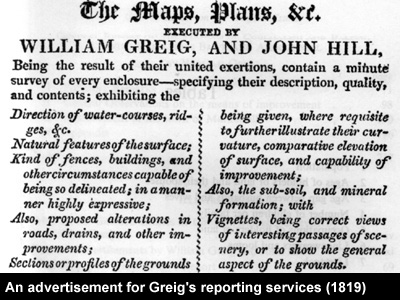

The trading life of the town was largely defined at the time of the plantation when the town took on a permanent look. Plantation settlers and native Irish worked the land and traded their produce among one another to enable their society to survive and flourish. Trading became increasingly diverse as some families abandoned their agricultural work and adopted cotton spinning and cloth weaving as their means of income. Families on the Gosford Estate and in the local district traded cloth for agricultural or dairy produce or to pay a tradesman for work completed. They were aided by the establishment of a weekly brown-linen market in the town on 25th February 1791.
In 1821, William Greig delivered his report into the financial workings of the Gosford Estate. He strongly advocated the erection of a Markethouse to provide a permanent trading home and to regulate the flow of commerce among local inhabitants. This Markethouse was duly built in the 1830's in Keady Street in the town. A weekly market was convened there to facilitate the buying and selling of linen and cotton, dairy produce, agricultural produce and livestock.
The market provided a focal point for the town for many years and was of great benefit to the local farmers who previously had travelled to Armagh or Tandragee to sell their produce.


